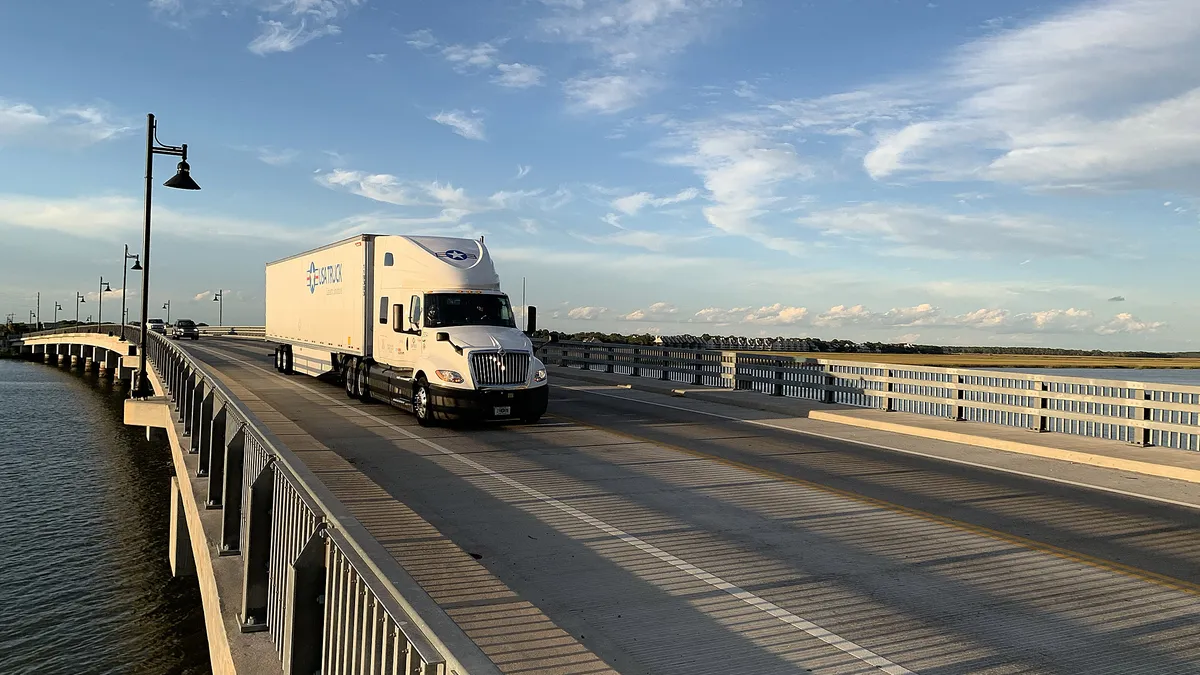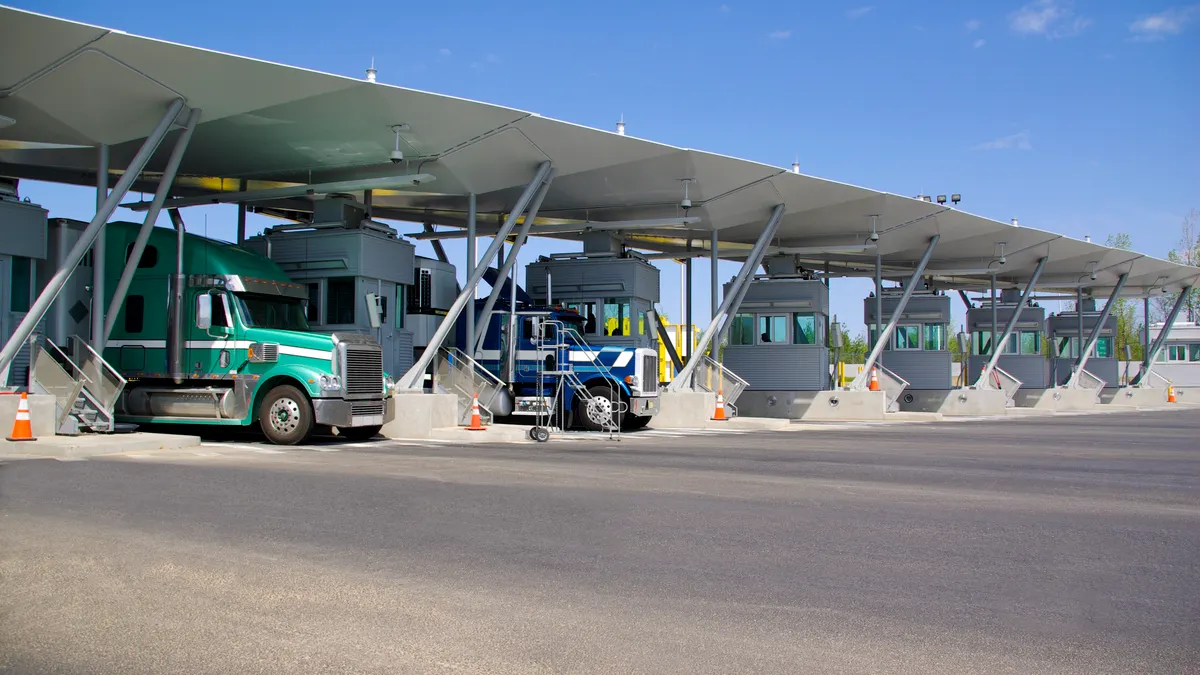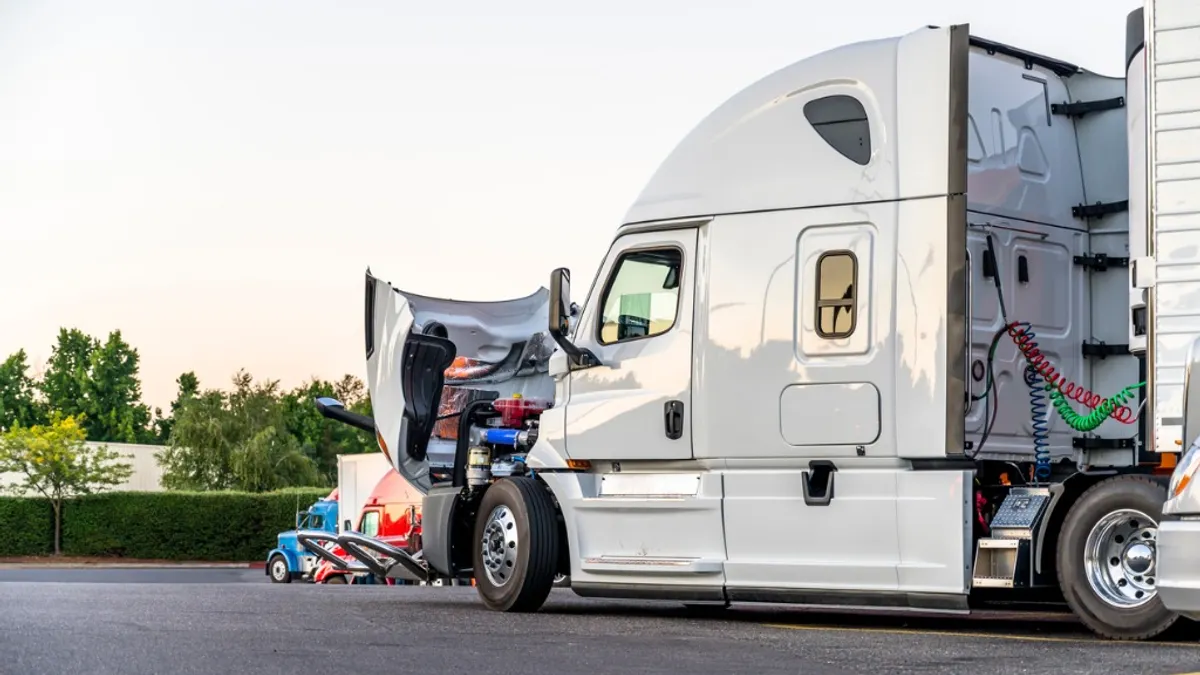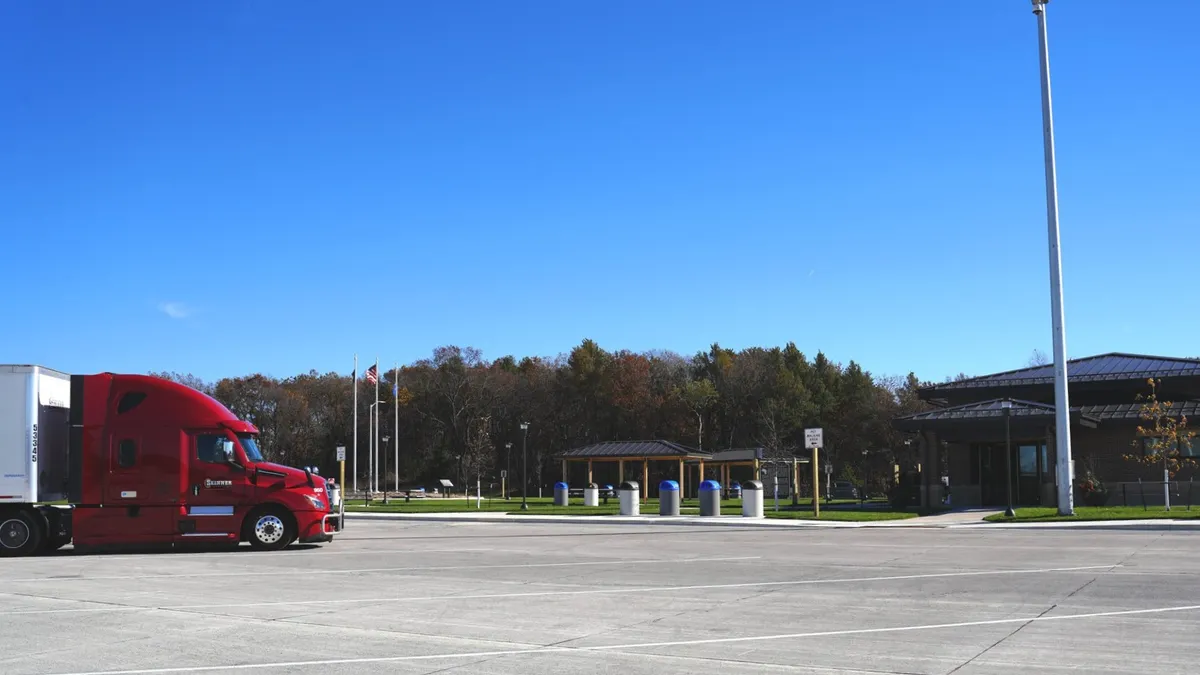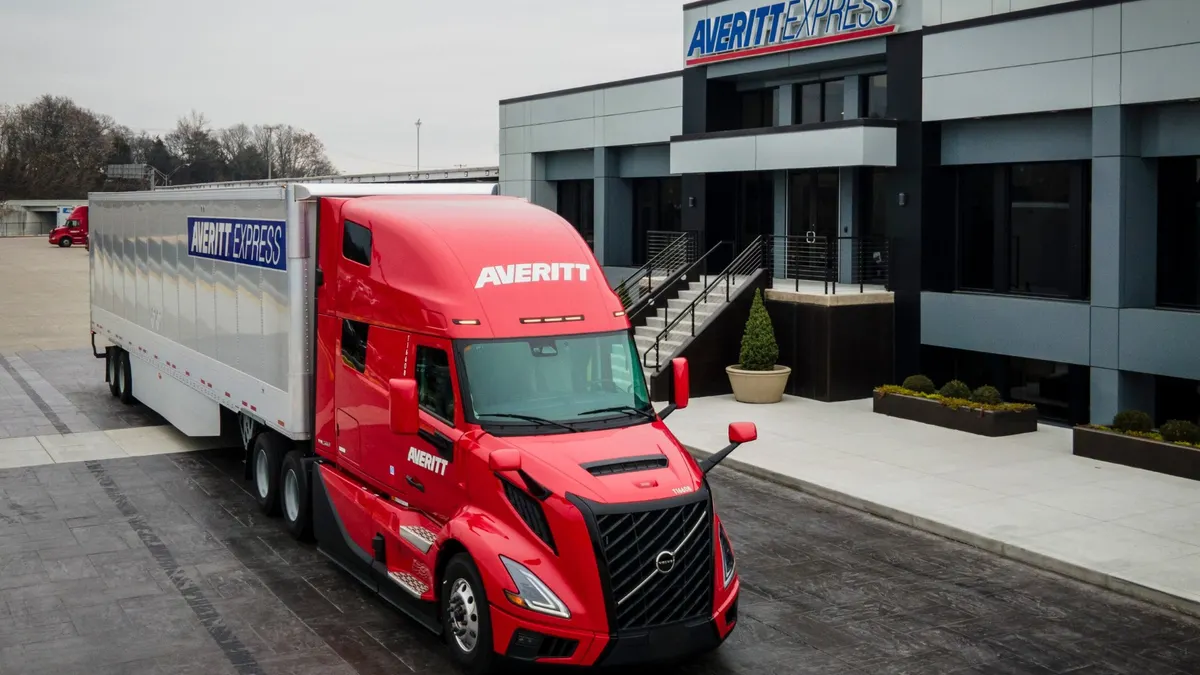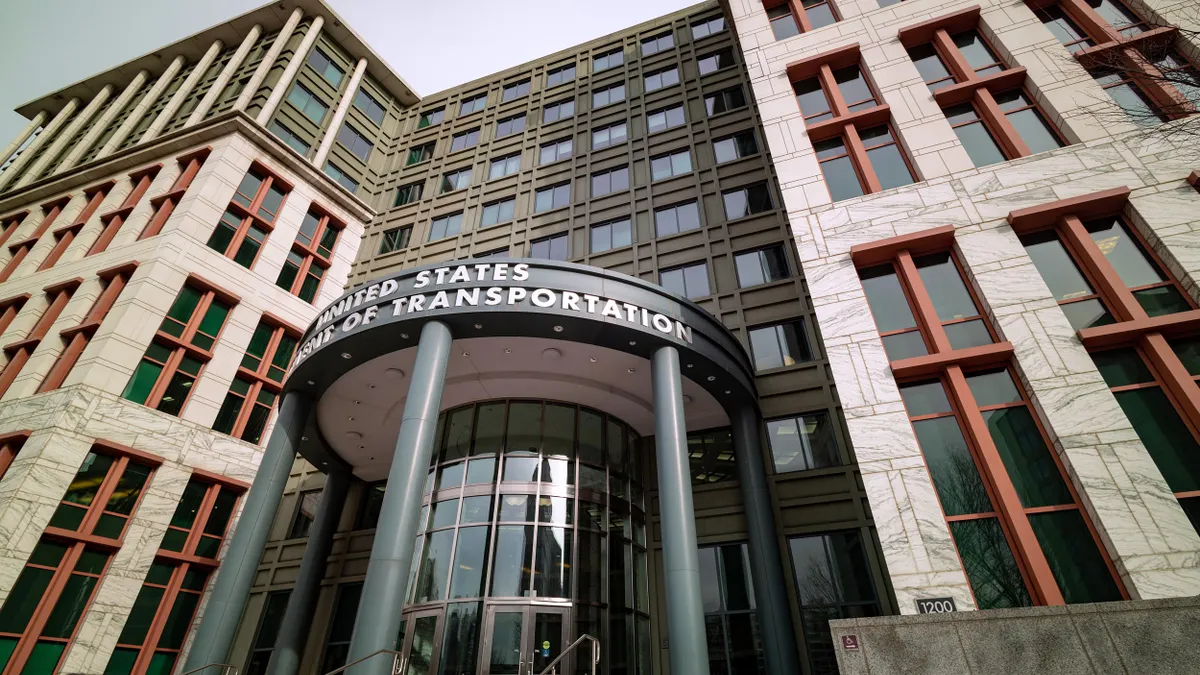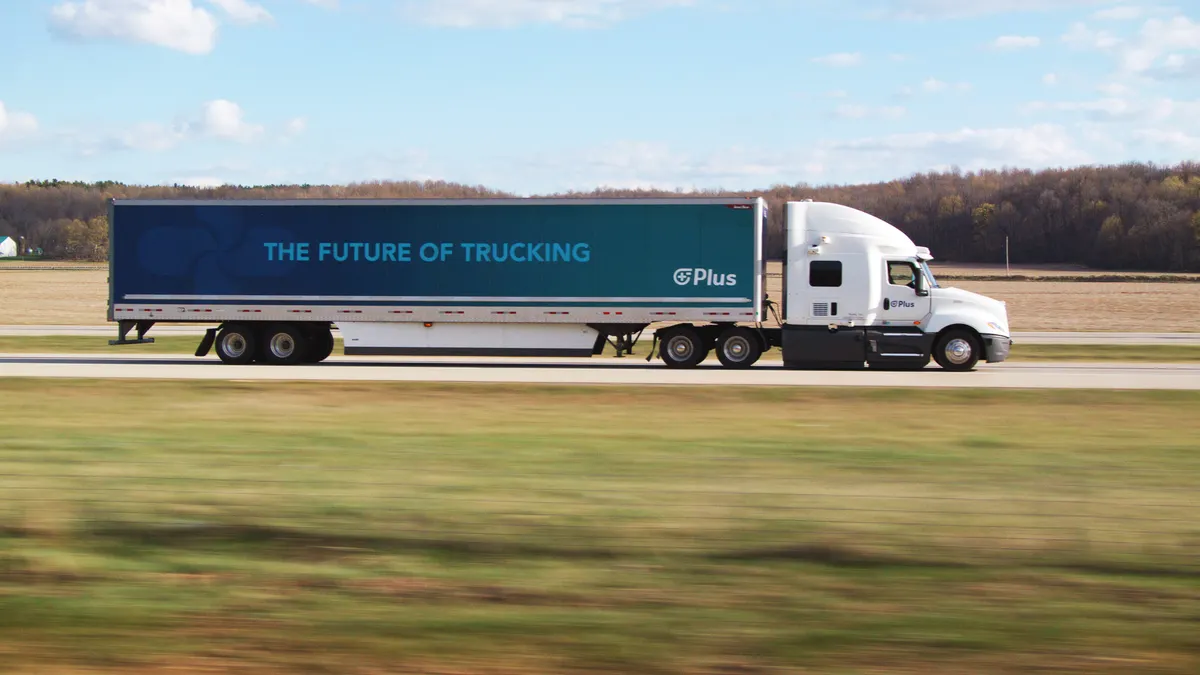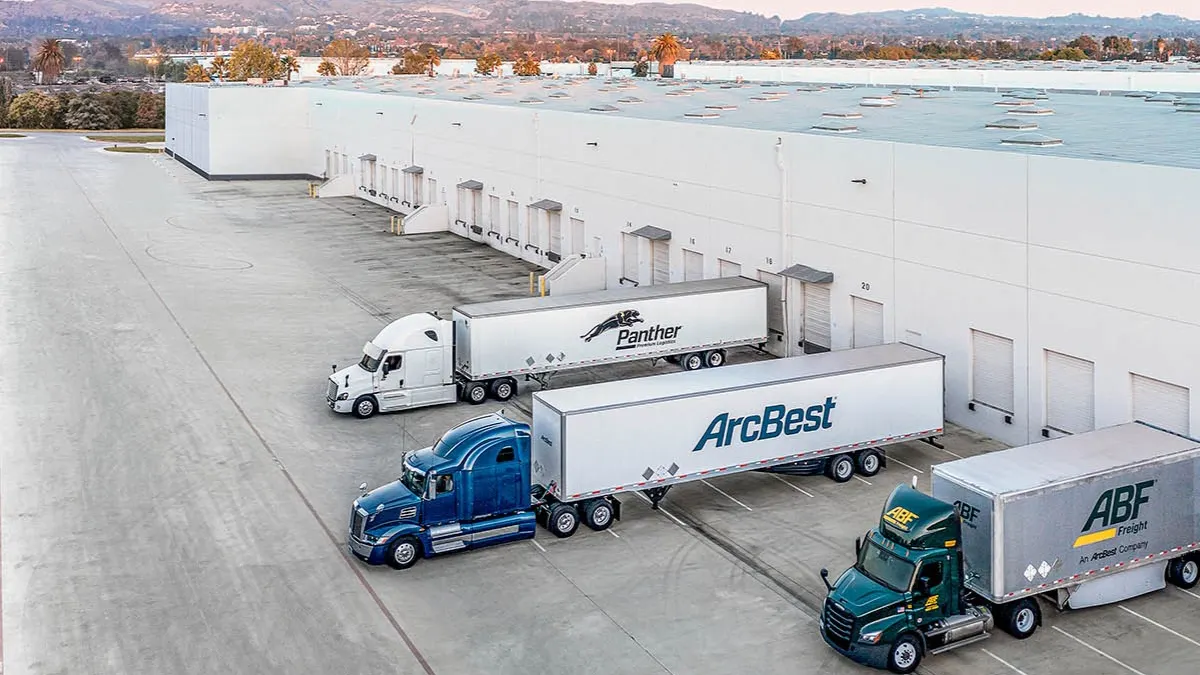USA Truck, like many businesses, went fully remote for office operations last spring when the pandemic prompted large-scale shutdowns. The decision was straightforward for most companies, as they put staff safety above all else.
"When the pandemic hit ... you have that 'fight or flight' button in your brain and say, 'OK, what do we have to do to get through this?'" Nick Wakefield, vice president of human resources, driver recruiting and retention at USA Truck, said in an interview.
But the decision to bring staff back to the office is less black and white. Hybrid setups are a popular option, in which employees work some days from home and others days in the office.
Executives face myriad considerations in making this type of configuration work, from culture to safety to productivity. And the return to work is a high-stakes decision. Managers face the risk of employees quitting if they don't offer remote or hybrid options. If variants of the virus emerge, the safety of staff working in close quarters could be in danger. Culture and engagement could suffer in a remote setup, ultimately leading to turnover issues.
The decision is particularly difficult for the transport sector, in which several types of jobs cannot be performed remotely. Employers that opt for a remote or hybrid setup for office workers must also consider the impacts on staff that cannot work from home, such as truck drivers and technicians.
USA Truck is in the process of its return-to-work planning, and managers are figuring out hybrid schedules for their teams after they saw many benefits of remote operations during the pandemic, Wakefield said.
"We're actually finding employees are happier," Wakefield said. "They're growing and thriving."
The pros and cons of hybrid
"Productivity spiked once we went remote," Wakefield said. "Our business went through the roof."
Consolidated operating revenue grew by nearly $30 million from 2019 to 2020, a 5% increase. Load count grew 26% from Q4 2019 to Q4 2020 for USA Truck's logistics segment, and deadheading in the trucking unit dropped from 14.2% to 11.6% in that same timeframe.
Turnover also dropped in half for drivers and office staff, and customer satisfaction increased, Wakefield said.
The pandemic wasn't the first time USA Truck made a quick shift to remote work. In 2019, its Arkansas headquarters were affected by a flood, and the company had to pivot operations overnight.
Despite the disruption, "we found great success during that time period," Wakefield said, which piqued executives' interest in remote work. "We were exploring, 'Why do we perform better in crisis?'"
"Productivity spiked once we went remote."

Nick Wakefield
Vice President of Human Resources, Driver Recruiting and Retention at USA Truck
The pandemic was a wake-up call for many employers who discovered their businesses could function well — perhaps even better — in a nontraditional setup.
"I think we all found out during the pandemic that remote work is probably more efficient than we thought," said Brian Holland, president and CFO at Fleet Advantage.
At tb.lx by Daimler Trucks & Buses, a startup that develops software solutions, employees became more productive with the transition to hybrid work.
"A mix between the office and remote can really work wonders," Sara Gorjão, chief people officer at tb.lx, said in an email. Workers can spend less time per week commuting. They can often use more flexible schedules that accommodate their personal and family needs.
Ryan Schreiber, CarrierDirect's director of engagement, agreed that remote work can boost productivity and efficiency.
"People can't rely on inefficient processes built on institutional knowledge and the ability to just shout at the person across the room," Schreiber said in an email.
Documentation must be "on point" for remote and hybrid workplaces, Gorjão said, with all information in one easily accessible place.
Another advantage of remote work is firms are no longer limited by geography, which enables "companies to recruit the best available talent," Schreiber said. A lack of hard borders lets executives fish in a wider pool at a time when many are stepping up hiring and aiming to return their staff ranks closer to pre-pandemic levels.
In a similar vein, companies can reduce their needed office space and associated costs if only a portion of the workforce is on site at any time, Holland said.
Executives also have to consider tradeoffs of a physically spread out workforce and how to manage company culture and engagement.
"We miss being together," Holland said, adding that Fleet Advantage has operated well being remote.
Commonly cited pros and cons to remote work
| Benefits | Challenges |
|---|---|
| No commute | Ability to collaborate suffered |
| Cost savings | Effective real-time communication |
| Avoiding virus exposure | Managing relationships virtually |
| Better work-life balance | Technology troubleshooting |
Source: FlexJobs
For women in particular, balancing full-time work responsibilities with childcare proved challenging, especially if they did not have support or an understanding of flexibility from leadership.
"Unfortunately, in most cases, it fell to the moms to temporarily halt their careers to care for their families," Ellen Voie, president and CEO of the Women In Trucking Association, said in an email.
A remote environment can make it more difficult for women to concentrate, Voie said. "I do believe more women appreciate the workplace to remove many of the distractions of a home office."
Legacy technology and communication systems can be a hindrance to productively working from home, although, in many ways, the pandemic acted as a catalyst to update systems.
There are also limits to what current technology can do, particularly in supply chain and transport.
"You can't fix a tire remote," Wakefield said.
A McKinsey analysis found transport is among the sectors with the lowest potential for remote work. The theoretical maximum is just 22% of total time spent working remotely, according to the analysis.
It's a sharp contrast to finance, in which McKinsey estimates no productivity loss at 76% remote work.
Some job functions in transportation with the ability to be remote are still more difficult with a lack of face-to-face interactions. Holland named sales as one example. The team has "had to adapt to a different methodology of communication with their prospects and customers," he said.
5 sectors with most and least potential for remote work
On the flip side, truck driving is, in essence, a remote job. Drivers are accustomed to physical separation from their colleagues.
"During my years as a truck driver I spoke with my dispatcher seldom, and more seldom with my managers, yet we were still able to build a trust relationship," said Douglas J. Zubka, an industrial-organizational psychologist, which focuses on workplace behavior and conditions.
Long-held adages that remote work can't work, or is less productive, are simply "an excuse not to try," said Zubka, who formerly held roles at Wolf Driving School and FedEx Freight. "All one has to do is look to the stories of how truckers not only survived the crisis, but continued to perform exceptionally, delivering everything we need, and did it all remotely."
Communication: the key to success
Hybrid work can create a disconnect between office staff that has the flexibility to work from home versus drivers and technicians that can't. It's a cultural split that USA Truck has worked to address throughout the pandemic.
Leadership worked with drivers and other essential workers to ensure they understood how their job function supports customers. They also made sure to physically distance workers and provide personal protective equipment, Wakefield said. And for the remote employees, managers engaged through online cocktails and virtual games.
"We focused a lot on making sure that everyone understands how their role connects to the vision of the company," he said.
USA Truck relied heavily on employee communication during the pandemic. Each week, a text message would go out that allowed drivers and staff to provide anonymous feedback. USA Truck held conference calls each Friday to answer questions. The firm also uses WorkHound to collect employee feedback.
USA Truck set up a hotline that routed directly to Wakefield's cell phone, 24/7, for any employees that had COVID-related or other concerns. Wakefield then relayed any issues back to the executive team to come up with solutions.
It's kept Wakefield busy, but he doesn't mind.
"They're the ones out there struggling through it and keeping America moving. It was the least that I could do to service them," he said.
"A mix between the office and remote can really work wonders."

Sara Gorjão
Chief people officer at tb.lx by Daimler Trucks & Buses
The coronavirus-specific concerns will likely dissipate moving forward, but communication will remain critical for employers that opt for a hybrid setup, and has been a key component of transitions to hybrid.
"For us, what also proved to be super important was transparent communication," Gorjão said, which included making sure teams were aligned on expectations.
For Fleet Advantage, "open and frank dialogue" is something Holland said benefited employees and managers. "It's vital to have that interactive communication and get some feedback from the associates ... rather than kind of dictating from corporate culture how things are going to operate."
Management preps for a new setup
Executives moving to a hybrid setup have several factors to consider, which is why USA Truck is looking at every aspect of its business as it preps for the return to workplaces.
"We're really going from A to Z," Wakefield said.
Among the questions and considerations:
- How will each manager approach return-to-work planning?
- What's our communication strategy to employees?
- Will we set up a bank of workstations?
- Do we use an A-B schedule for workers?
- When visitors are in town, how do we approach that?
- How do we keep in compliance with local or state regulations?
- Will we incentivize or require vaccines?
- If cases start to re-escalate, what's our policy and response?
Executives may need to consult HR or legal teams to meet corporate compliance requirements. And they'll need to consider the unique needs of trucking firms and their staff.
"It requires different modeling and management than does that of the typical office premised on manufacturing management and a time clock," Zubka said.
They might also want to consider their own biases when weighing remote work. A January analysis from PwC found a disconnect between employee and employer desires for office work. More than half of employees in the study said they preferred to be remote at least three days a week once pandemic concerns dissipate, while 68% of executives said a typical employee should be in the office at least three days per week.
"The idea that remote work is not sustainable is a premise based on a narrow view," Zubka said.
Another survey, released in May by employment law firm Littler, found 71% of employees prefer hybrid, but 55% of employers will offer that model.
"It's interesting to see the dichotomy between what employers want and what associates want," Holland said.
Majority of men and women prefer remote-only
There may also be differences in men's and women's preferences in the workplace. A FlexJobs survey found 68% of women preferred fully remote job setups and 30% wanted hybrid. Men also preferred remote work but at a smaller percentage, 57%, and 41% preferred hybrid.
Understanding the nuances is critical for executives in the transport industry if they want to recruit and retain women, who make up just 10% of drivers.
Voie advised executives to offer flexibility to women working in a hybrid environment, especially when children might be on summer vacation, or sick and home from school.
"Leadership needs to be truly proactive in allowing women to determine their hours without making comments or showing an underlying negative view of a woman's need to work around her family's schedule," Voie said.
The employee experience
Even after moving to a remote or hybrid setup, executives will need to keep an eye on metrics and culture to ensure productivity and employee satisfaction aren't taking any turns in the wrong direction. Holland recommended setting up a dashboard with KPIs to stay on target.
One aspect Schreiber emphasized leaders should not focus on is monitoring employees and making sure they're doing their jobs while remote.
"If your organization needs people to be in the office to identify people who aren't doing their jobs, there are much bigger problems to solve and it's not with the employee," he said.
Voie voiced a similar opinion, advising leaders to recognize employee contributions to the company "instead of counting hours or minutes on a time clock."
Overall the pandemic has provided a leadership lesson for USA Truck, Wakefield said.
"It's not always the strategy that matters," he said. "Sometimes it's really focusing on the employee experience."


